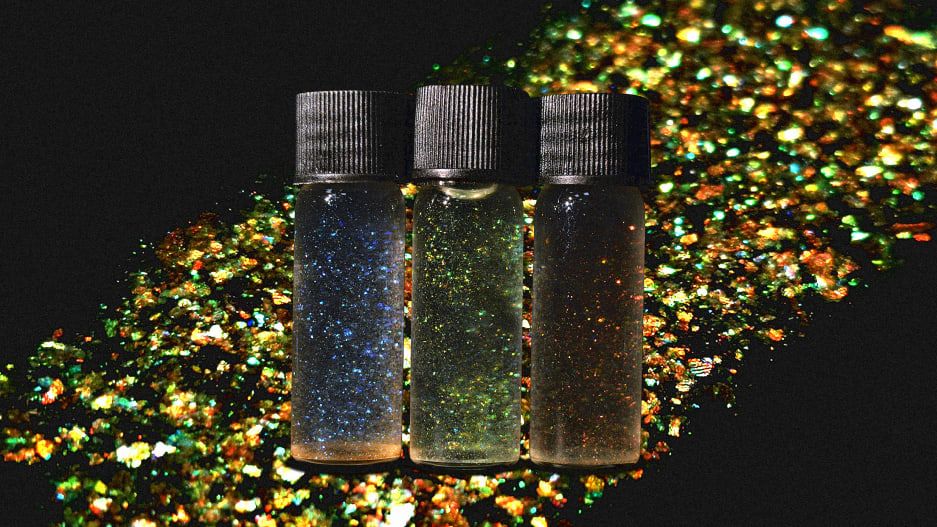
✨ Just in for X-mas: biodegradable glitter
Researchers at Cambridge University have a solution that makes the sparkly holiday ahead more environmentally friendly. Biodegradable glitter in time for Christmas.
Share this story!
Glitter is made out of microplastics and is very dangerous to the ocean plastic crisis, and in the long run to every ecosystem. With the holiday season approaching stores are filling up with decorations and cards drenched in glitter. Now, researchers have a solution for a pollution-free sparkly holiday season - a glitter made from cellulose, which is biodegradable.
"Conventional pigments, like your everyday glitter, are not produced sustainably," said Professor Silvia Vignolini from Cambridge's Yusuf Hamied Department of Chemistry, the paper's senior author to PHYS.org. "They get into the soil, the ocean and contribute to an overall level of pollution. Consumers are starting to realize that while glitters are fun, they also have real environmental harms."
"It (the new glitter) will be just as annoying—but it won't harm the planet and is safe for your little ones," said Vignolini.
This new type of glitter is made from cellulose nanocrystals that can create radiant colors thanks to a process called structural color.
Cambridge’s press release explained that the nanocrystals form a helicoidal structure - which is a kind of spiral - that bends light to create colors. Examples of this process in nature can be seen in butterfly wings or peacock feathers. Fast Company explains that cellulose is in itself clear, but it can be made to create flashy hues through a process known as self-assembly, where the crystals twist and align.
Vignolini told Fast Company that the team used wood pulp to source their cellulose. However, any type of cellulose can be used, such as cotton, banana peels or coffee bean skins. The Cambridge team used water to turn their wood-pulp cellulose into film and when the water evaporates, it forces the crystals to contract and spiral, creating colors. After that, they ground the film into tiny sparkly pieces.
Besides using the team's biodegradable glitter for decorations or crafts, it could be used in cosmetics. Sadly the makeup industry earlier used around 5 000 tonnes of microplastics a year in Europe only.
"We believe this product could revolutionize the cosmetics industry by providing a fully sustainable, biodegradable and vegan pigment and glitter," Vignolini said in the press release.
Read the whole study HERE
Picture: University of Cambridge via Fast Company
By becoming a premium supporter, you help in the creation and sharing of fact-based optimistic news all over the world.


